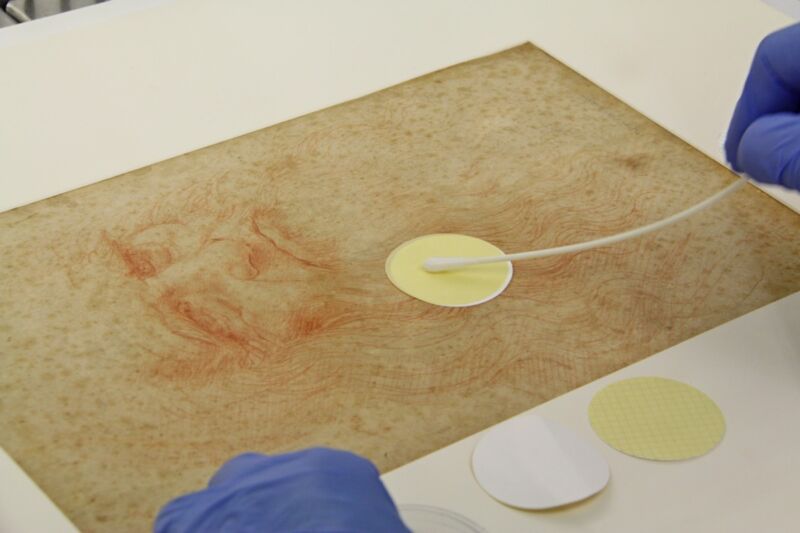
Enlarge / Sampling microbes from Leonardo da Vinci's Portrait of a Man in Red Chalk (1512). (credit: Guadalupe Piñar et al.)
Microbiomes are all the scientific rage, even in art conservation, where studying the microbial species that congregate on works of art may lead to new ways to slow down the deterioration of priceless aging artwork, as well as potentially unmask counterfeits. For instance, scientists have analyzed the microbes found on seven of Leonardo da Vinci's drawings, according to a recent paper published in the journal Frontiers in Microbiology. And back in March, scientists at the J. Craig Venter Institute (JCVI) collected and analyzed swabs taken from centuries-old art in a private collection housed in Florence, Italy, and published their findings in the journal Microbial Ecology.
The researchers behind the earlier March paper were JCVI geneticists who collaborated with the Leonardo da Vinci DNA Project in France. The work built on a prior study looking for microbial signatures and possible geographic patterns in hairs collected from people in the District of Columbia and San Diego, California. They concluded from that analysis that microbes could be a useful geographic signature.
For the March study, the JCVI geneticists took swabs of microbes from Renaissance-style pieces and confirmed the presence of so-called "oxidase positive" microbes on painted wood and canvas surfaces. These microbes munch on the compounds found in paint, glue, and cellulose (found in paper, canvas, and wood), in turn producing water or hydrogen peroxide as byproducts.
No comments:
Post a Comment